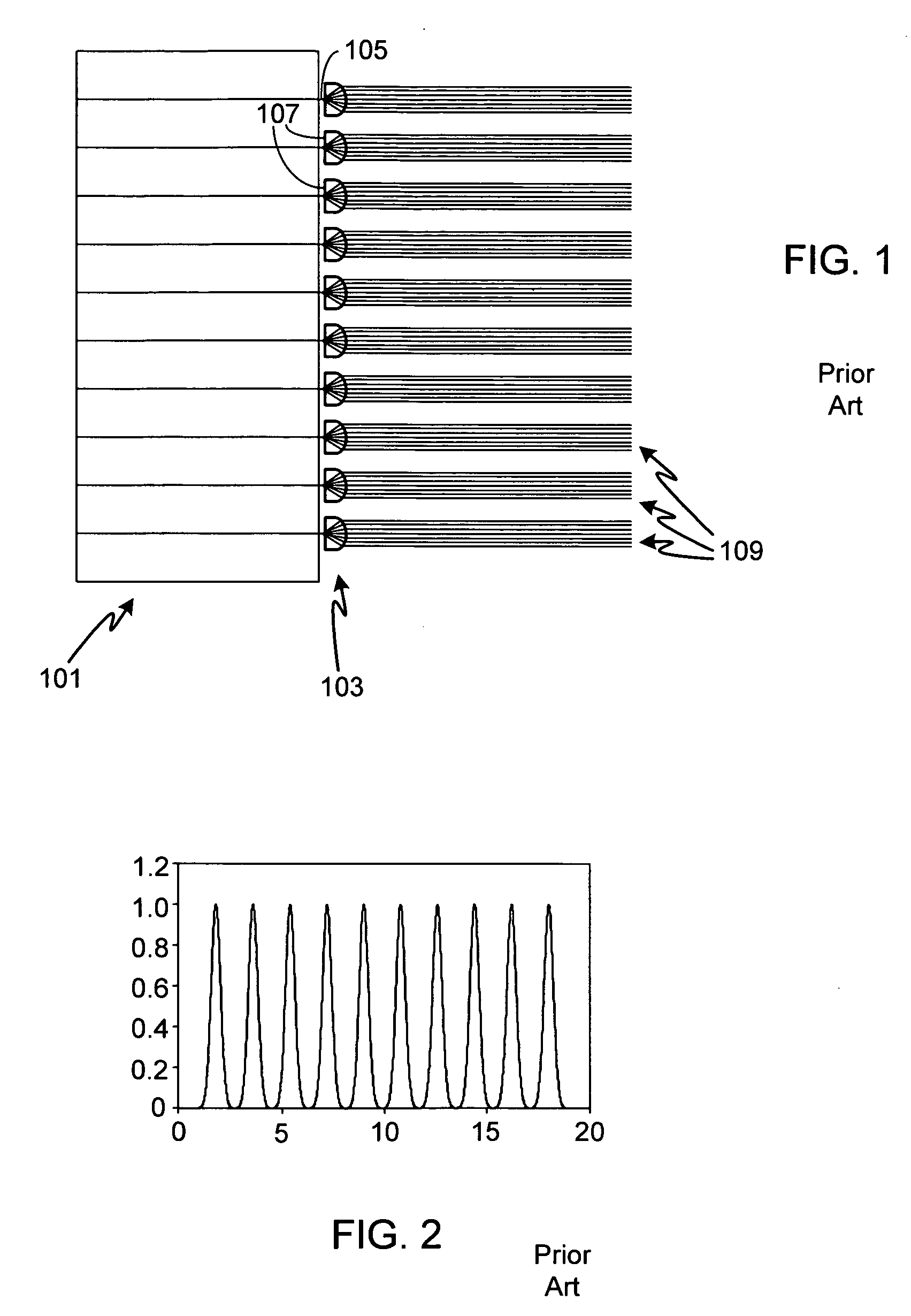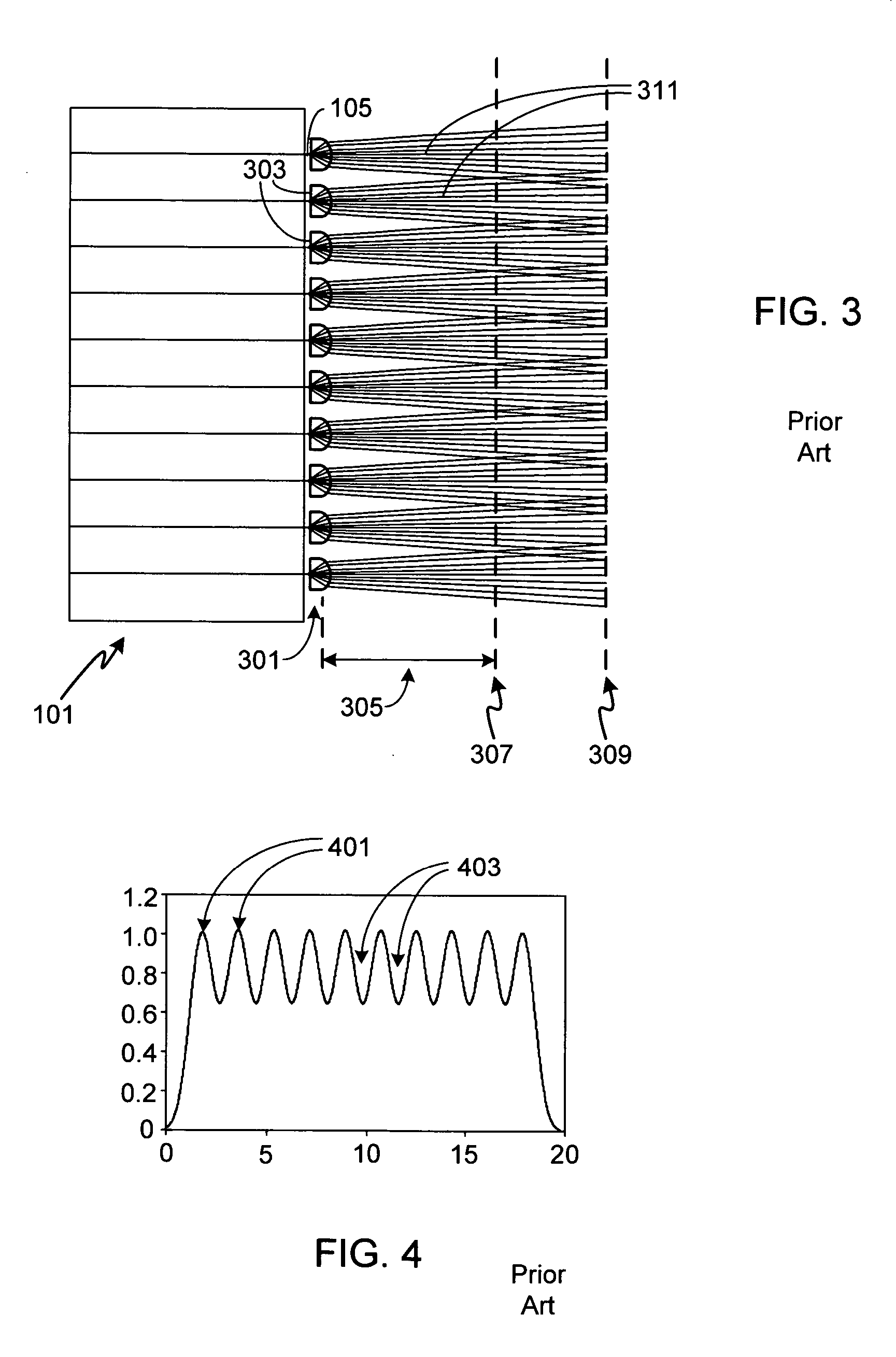Diode laser array beam homogenizer
a technology of diodes and beam homogenizers, applied in semiconductor lasers, instruments, optical elements, etc., can solve the problems of beam non-uniformities, limited usefulness, and inability to achieve mode quality and beam stability, so as to reduce the divergence in one axis, reduce the divergence of output, and reduce the design complexity
- Summary
- Abstract
- Description
- Claims
- Application Information
AI Technical Summary
Benefits of technology
Problems solved by technology
Method used
Image
Examples
Embodiment Construction
[0017]FIG. 1 is an illustration of a diode laser array 101 (e.g., a diode laser bar or stack) and a conventional optical system 103, system 103 providing improved beam uniformity. As shown, each output beam 105 from laser diode array 101 passes through an optical element 107 of optical system 103, thereby forming a plurality of collimated output beams 109. FIG. 2 illustrates the beam profile of the output of laser array 101 after the output beams have passed through optical system 103. As shown, the output profile consists of a plurality of discrete beams.
[0018]FIG. 3 is an illustration of diode laser array 101 passing through a optical system 301, system 301 intended to provide a more uniform output than that provided by optical system 103. As shown, the effect of each element 303 of optical system 301 is to control the expansion of beams 105 such that they overlap as the distance 305 between optical system 301 and the measurement location 307 is increased. Assuming a measurement ...
PUM
 Login to View More
Login to View More Abstract
Description
Claims
Application Information
 Login to View More
Login to View More - R&D
- Intellectual Property
- Life Sciences
- Materials
- Tech Scout
- Unparalleled Data Quality
- Higher Quality Content
- 60% Fewer Hallucinations
Browse by: Latest US Patents, China's latest patents, Technical Efficacy Thesaurus, Application Domain, Technology Topic, Popular Technical Reports.
© 2025 PatSnap. All rights reserved.Legal|Privacy policy|Modern Slavery Act Transparency Statement|Sitemap|About US| Contact US: help@patsnap.com



